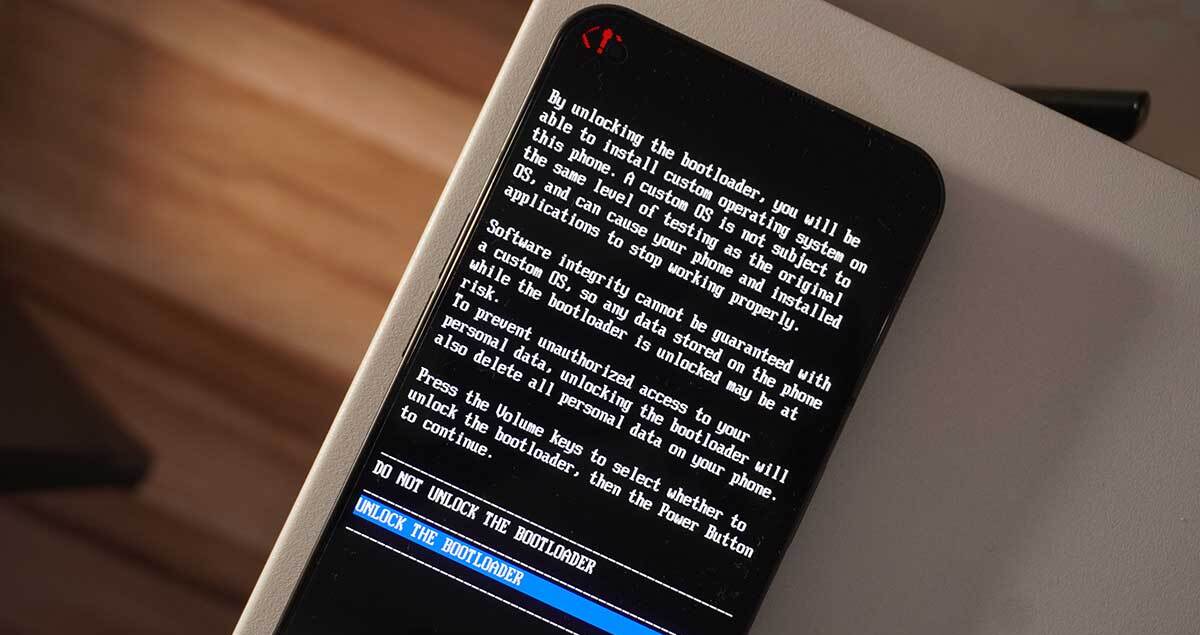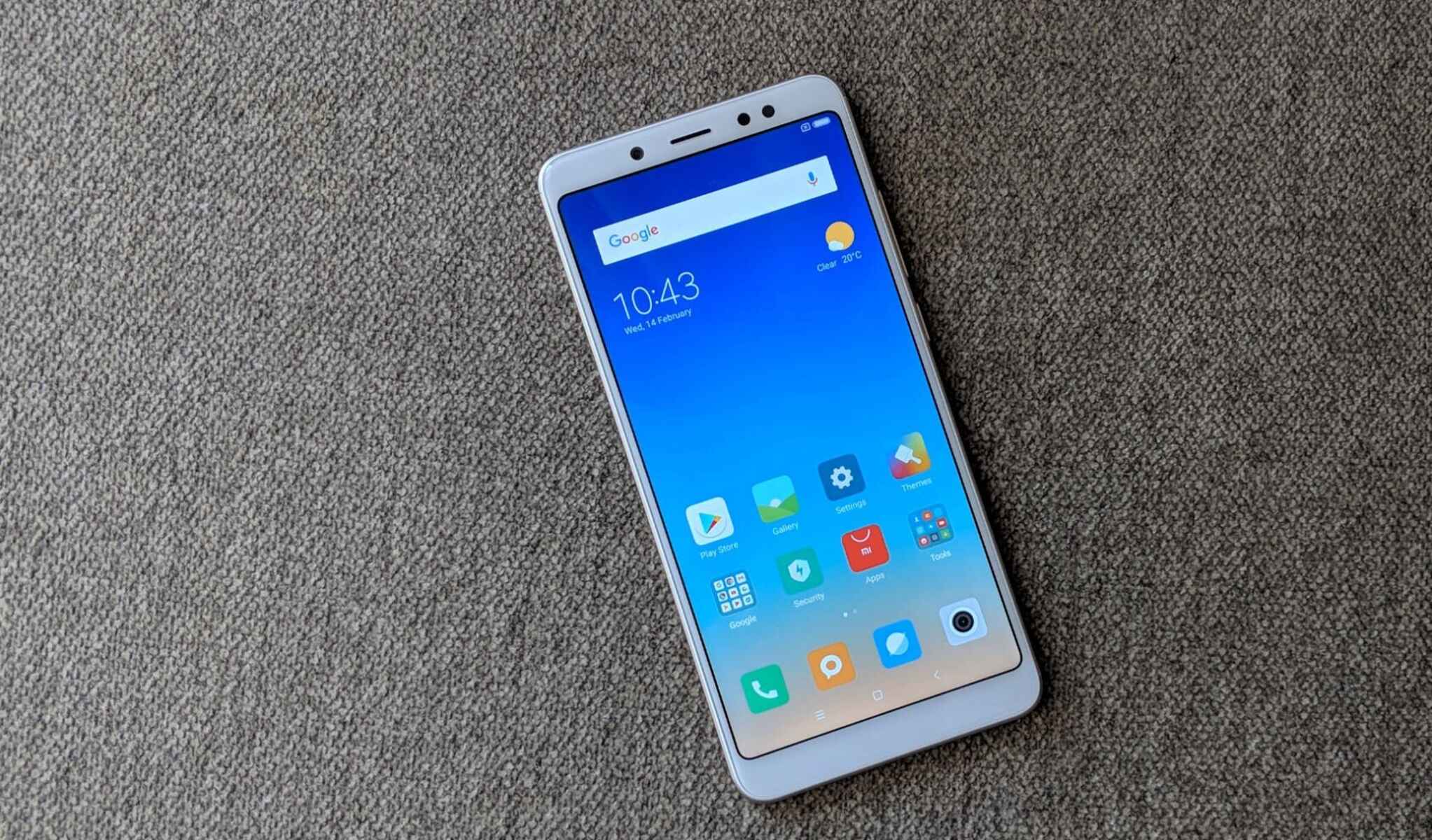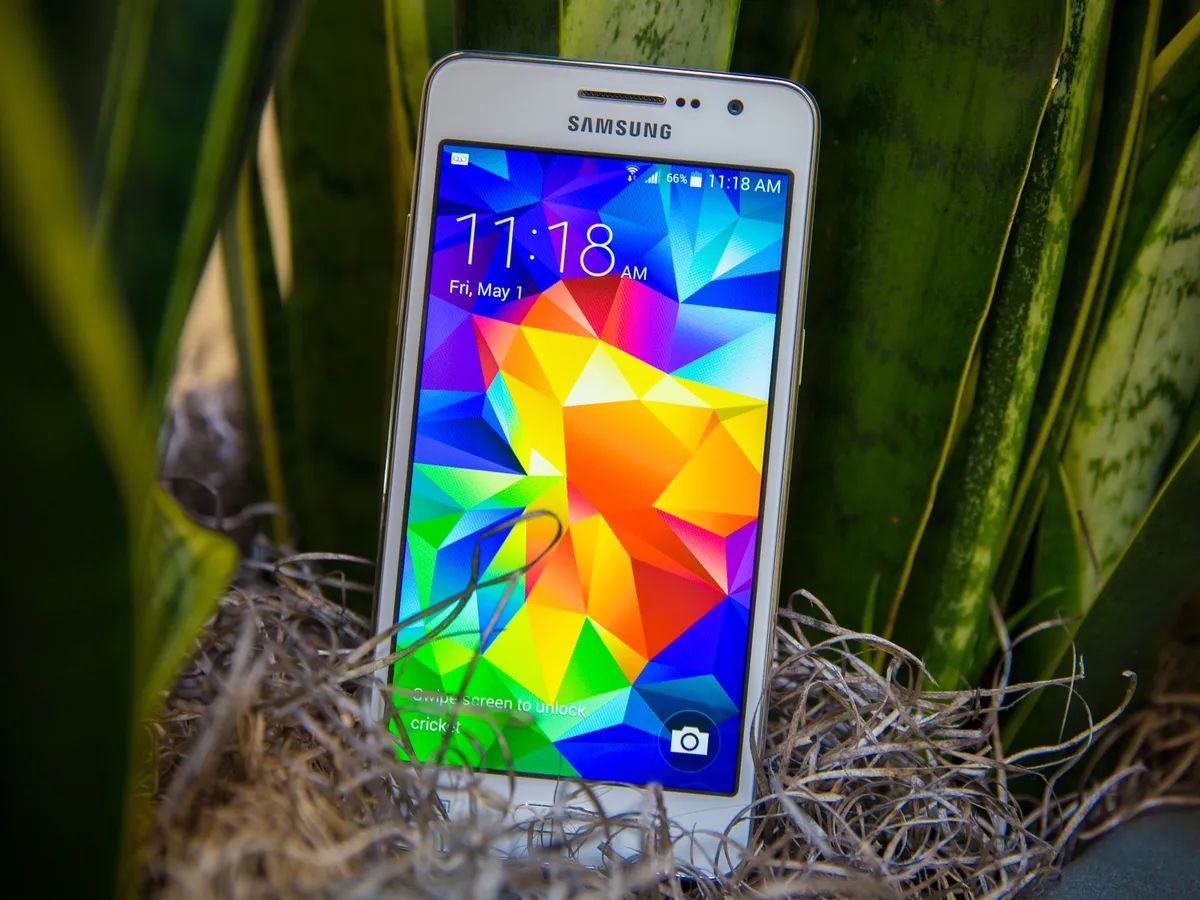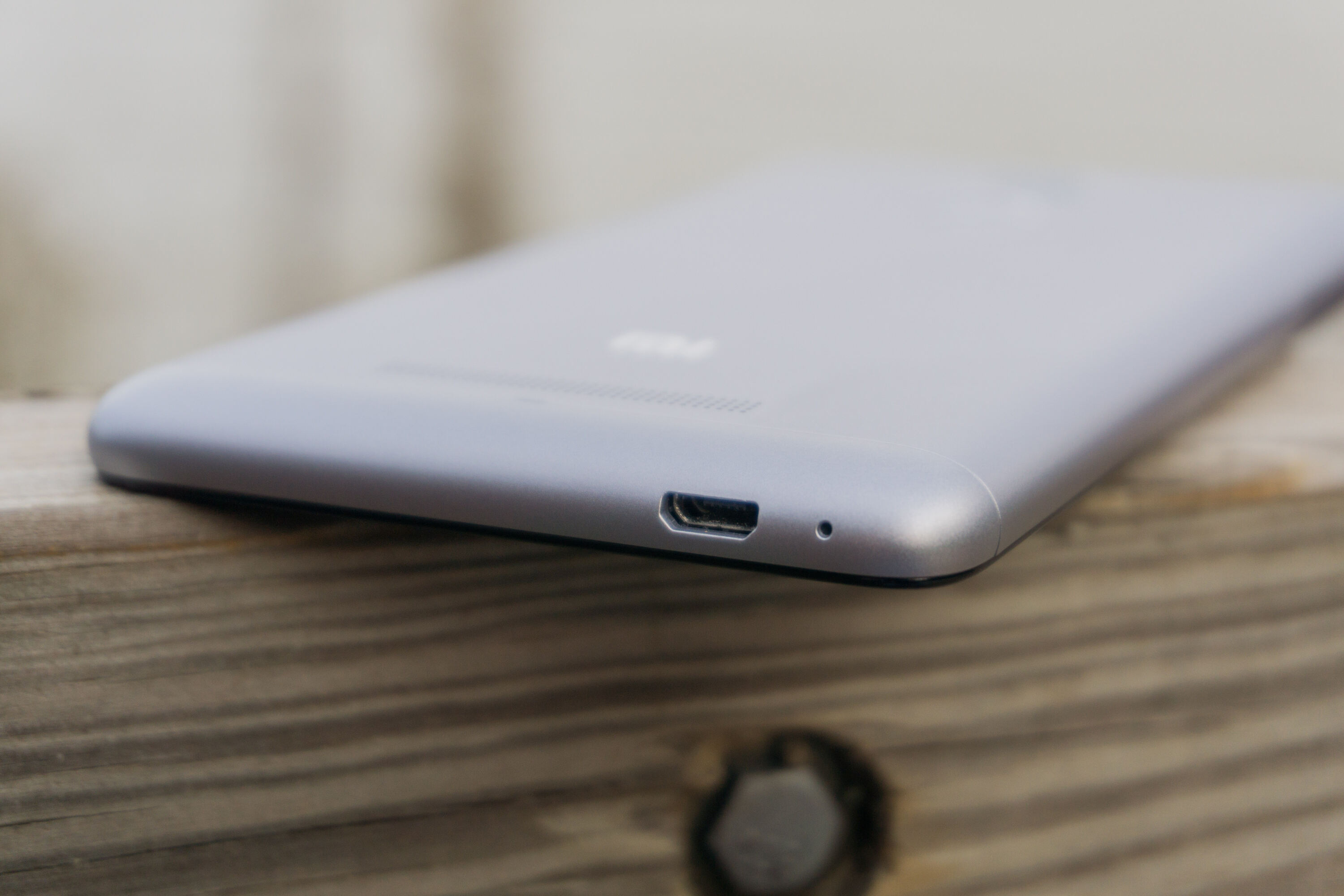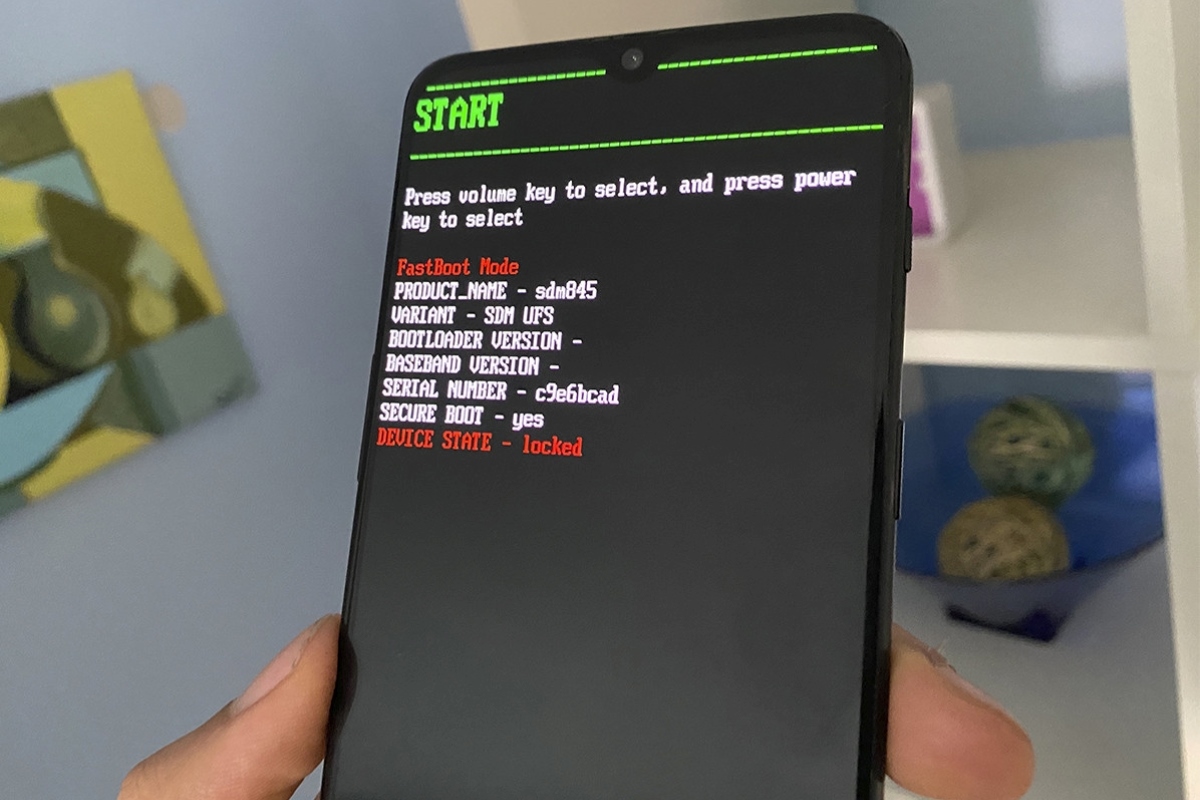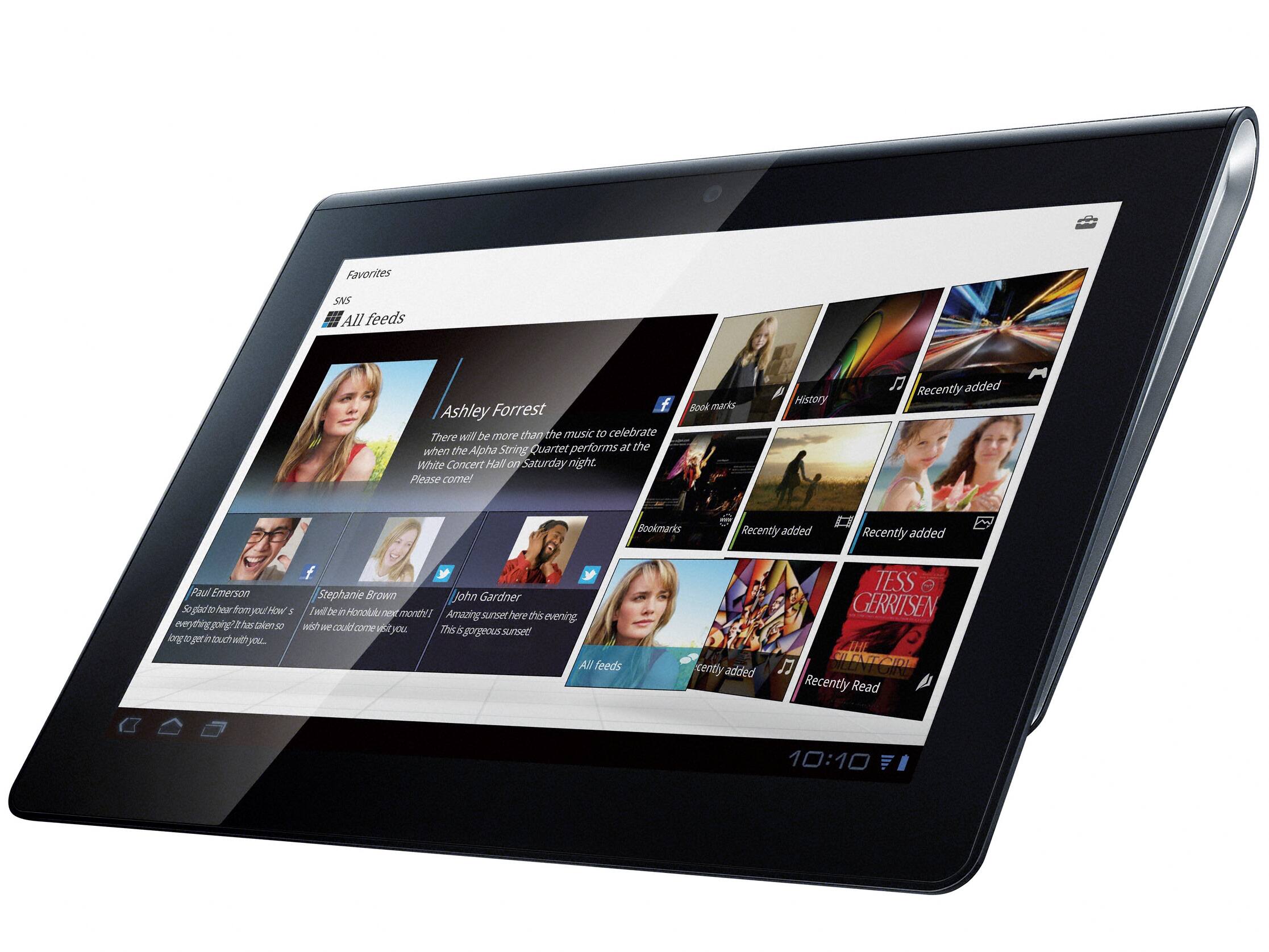Introduction
When it comes to understanding the inner workings of an Android device, one term that often comes up is “bootloader.” It is a crucial component that plays a vital role in the functioning and customization of an Android device. Whether you are a tech enthusiast or a casual Android user, having a basic understanding of what a bootloader is and how it works can be beneficial.
A bootloader is a program or code that initiates the startup process of an Android device. It acts as the bridge between the device’s hardware and software, ensuring a smooth transition from the device’s powered-off state to its operating system. Essentially, the bootloader loads and starts the core operating system, such as Android, and sets up the necessary components for the device to function properly.
The primary purpose of a bootloader is to ensure the integrity and security of the device’s software. It verifies the authenticity of the operating system and other software components before allowing them to be loaded into the device’s memory. If the bootloader detects any unauthorized or modified software, it can abort the boot process to prevent potential security breaches.
Additionally, the bootloader has another crucial function – it controls the boot mode of the device. This allows users to access different boot modes such as Recovery Mode, Fastboot Mode, or Bootloader Mode. These modes provide advanced options for troubleshooting, flashing custom ROMs, or performing system updates.
Understanding how the bootloader works can be particularly helpful for users who wish to customize or modify their Android devices. Unlocking the bootloader is a necessary step for those who want to install custom ROMs, root their devices, or make other system-level modifications. However, it is important to note that unlocking the bootloader may void the device’s warranty and can carry certain risks, which we will explore later in this article.
In the following sections, we will delve deeper into the purpose of the bootloader, how it functions, and the process of unlocking it. We will also cover the advantages and disadvantages of unlocking the bootloader, as well as the precautions to be taken. By the end of this article, you will have a comprehensive understanding of the bootloader in Android devices and its implications for customization and device security.
What Is a Bootloader?
A bootloader is a small program or code that is stored in the device’s memory and is responsible for initializing the boot process when the device is powered on. It acts as the intermediary between the hardware and software, ensuring a smooth and secure startup sequence.
Think of the bootloader as the gatekeeper that checks the integrity and authenticity of the operating system and other software components before allowing them to be loaded into the device’s memory. It performs a series of checks and verifications to ensure that only trusted software is executed, thereby enhancing the security of the device.
In addition to its security measures, the bootloader also controls the boot mode of the device. This enables users to access different boot modes such as Recovery Mode or Fastboot Mode. These modes provide advanced options for troubleshooting, flashing custom ROMs, or performing system updates.
By default, the bootloader is locked on most Android devices, which means that only the manufacturer’s officially signed software can be executed. This prevents unauthorized modifications to the device’s software and helps maintain its stability and security. However, some users choose to unlock the bootloader to gain more control over their device and customize it according to their preferences.
It’s important to note that the bootloader is specific to each device model and manufacturer. This means that the bootloader for one device may not work on another, even if they are from the same manufacturer. Therefore, it’s crucial to follow the correct instructions and procedures when dealing with the bootloader of a specific device.
In the next sections, we will explore the purpose and functionalities of the bootloader in more detail, as well as the process of unlocking it. We will also discuss the advantages and disadvantages of unlocking the bootloader and the precautions that need to be taken to minimize the associated risks. So, let’s dive deeper into the world of bootloaders in Android devices.
The Purpose of Bootloader in Android Devices
The bootloader in Android devices serves several important purposes that contribute to the overall functionality and security of the device. Understanding these purposes can provide insight into why the bootloader is a critical component of any Android device.
1. Booting the Operating System: The primary purpose of the bootloader is to load and start the device’s operating system, such as Android. When you power on your Android device, the bootloader initializes the boot process and ensures that the necessary files and components are loaded into memory. Without the bootloader, the device would not be able to start and run the operating system.
2. Authenticating and Verifying Software: The bootloader plays a crucial role in ensuring the integrity and authenticity of the device’s software. It verifies the digital signatures of the operating system and other software components before allowing them to be loaded into memory. This prevents unauthorized or modified software from being executed, protecting the device from potential security risks.
3. Enabling Customization and Modifications: While the bootloader is locked by default on most Android devices, unlocking it provides users with the ability to customize and modify their devices. Unlocking the bootloader is a necessary step for activities such as installing custom ROMs, rooting the device, or applying system-level modifications. By allowing users to unlock the bootloader, Android devices offer a level of flexibility and personalization.
4. Access to Boot Modes: The bootloader also controls the boot mode of the device, allowing users to access different boot modes such as Recovery Mode, Fastboot Mode, or Bootloader Mode. These modes provide advanced options for troubleshooting, performing system updates, or flashing custom software. They offer a way to recover the device in case of software issues and expand the device’s capabilities beyond the standard operating system.
5. Security and Anti-Tampering Measures: The bootloader’s role in verifying and authenticating software helps enhance the security of the device. By ensuring that only trusted software is executed, the bootloader protects against potential malware or unauthorized modifications that could compromise the device’s security. This adds an extra layer of protection to Android devices and helps to maintain the trustworthiness of the software environment.
Overall, the purpose of the bootloader in Android devices is to facilitate the startup process, verify software authenticity, enable customization, and enhance security measures. While unlocking the bootloader introduces certain risks and considerations, it also provides users with the freedom to personalize their devices and explore advanced features. In the next sections, we will delve into how the bootloader works, the process of unlocking it, and the advantages and disadvantages associated with bootloader unlocking.
How Does the Bootloader Work?
The operation of a bootloader in an Android device involves several steps that collectively allow the device to start up and load the operating system. Understanding how the bootloader works can provide insights into the startup process of an Android device and how it interacts with the software and hardware components.
1. Power-On Sequence: When you power on your Android device, the bootloader is the first piece of code that runs. It resides in a special area of the device’s memory known as the Boot ROM or Boot Flash. The Boot ROM or Boot Flash contains the initial instructions for the device to start executing code and initialize the essential hardware components.
2. Bootloader Initialization: Once executed, the bootloader initializes the core components of the device, such as the CPU, memory, and display. It then performs a series of checks and operations to ensure the integrity and authenticity of the operating system and other software components to be loaded into memory.
3. Authentication and Verification: The bootloader verifies the digital signatures of the software components, including the operating system. These digital signatures are cryptographic signatures that ensure the authenticity and integrity of the software. By checking these signatures, the bootloader can determine if the software components are official and have not been tampered with. If the signatures are valid, the bootloader allows the software to be loaded into memory.
4. Loading the Operating System: Once the verification process is complete, the bootloader loads the operating system into the device’s memory. This involves transferring the necessary files and data from the storage medium, such as the internal memory or external storage, into the RAM for execution. The bootloader also sets up the environment required for the operating system to run, including initializing device drivers and system settings.
5. Transition to the Operating System: After loading the operating system, the bootloader hands over control to the operating system, allowing it to take over and continue the boot process. At this point, the bootloader’s job is completed, and the operating system takes charge of running the device and providing the user interface and functionalities.
It is worth noting that the behavior and functionality of the bootloader can vary between different Android devices and manufacturers. Some manufacturers provide locked bootloaders by default, while others may provide unlockable bootloaders, allowing users to modify and customize their devices. The specific steps and processes involved in unlocking the bootloader can differ, so it is crucial to follow the manufacturer’s instructions and guidelines.
In the next sections, we will explore the process of unlocking the bootloader, as well as the advantages and disadvantages associated with bootloader unlocking in Android devices. We will also discuss the risks involved and the precautions that need to be taken when dealing with the bootloader. So, let’s proceed to the process of unlocking the bootloader in Android devices.
Unlocking the Bootloader
Unlocking the bootloader is a process that allows users to gain full control over their Android devices and make customizations that are otherwise restricted. By unlocking the bootloader, users can install custom ROMs, root their devices, and perform other system-level modifications. However, it is essential to note that unlocking the bootloader comes with certain risks and considerations.
1. Advantages of Unlocking: One of the main advantages of unlocking the bootloader is the freedom to install custom ROMs. Custom ROMs are modified versions of the Android operating system that offer additional features, improved performance, and a more personalized user experience. Unlocking the bootloader also allows users to root their devices, granting them administrative privileges to modify system files, remove bloatware, and install powerful third-party apps.
2. Disadvantages of Unlocking: Unlocking the bootloader has its drawbacks. Firstly, it can void the device’s warranty, as manufacturers often consider bootloader unlocking as a breach of their warranty terms. Additionally, unlocking the bootloader introduces potential security risks. Since the bootloader verifies and authenticates software during the boot process, unlocking it can allow the installation of unauthorized or potentially malicious software, compromising the device’s security.
3. The Process of Unlocking: The process of unlocking the bootloader varies depending on the device’s manufacturer and model. In general, it involves enabling developer options and USB debugging on the device, connecting it to a computer, and using specific commands or tools provided by the manufacturer to unlock the bootloader. It is crucial to follow the manufacturer’s instructions carefully and understand the potential risks and consequences before proceeding with the unlocking process.
4. Potential Risks and Precautions: Unlocking the bootloader carries certain risks, and it is essential to be aware of them. One significant risk is the possibility of “bricking” the device, rendering it unusable or difficult to recover. Installing custom firmware or incompatible software can lead to instability or software conflicts, resulting in a non-functional device. It is recommended to research thoroughly and back up important data before unlocking the bootloader, and to proceed with caution.
5. Bootloader Lock Status: It is worth noting that not all Android devices have unlockable bootloaders. Some manufacturers, especially those with carrier-branded devices, restrict the bootloader unlocking process. This means that users may not have the option to unlock the bootloader on certain devices, limiting their customization capabilities. It is important to check the manufacturer’s official documentation or online forums to determine if a device can be unlocked before attempting the process.
Unlocking the bootloader can be a rewarding experience for users who want to explore the full potential of their Android devices. It allows for customization, improved performance, and access to a broader range of software options. However, it is crucial to weigh the advantages against the potential risks and consequences, as well as to take necessary precautions to minimize these risks.
In the next sections, we will discuss the process of unlocking the bootloader in more detail, including the specific steps and precautions required. We will also address the potential risks and provide recommendations to ensure a smooth and successful bootloader unlocking experience.
Advantages and Disadvantages of Unlocking the Bootloader
Unlocking the bootloader on an Android device comes with both advantages and disadvantages. While it offers users the freedom to customize their devices and explore advanced features, it also carries certain risks and considerations that need to be taken into account. Here, we will discuss the advantages and disadvantages of unlocking the bootloader.
Advantages:
- Custom ROMs: Unlocking the bootloader enables users to install custom ROMs on their devices. Custom ROMs are modified versions of the Android operating system, created by third-party developers. They offer additional features, improved performance, and a more personalized user experience.
- Root Access: Rooting is another benefit of unlocking the bootloader. It grants users administrative privileges, allowing them to access and modify system files and settings. Root access provides more control over the device, enabling the installation of powerful apps and customizations.
- System-Level Modifications: Unlocking the bootloader allows users to make system-level modifications to their Android devices. They can remove bloatware, optimize performance, and customize various aspects of the operating system to suit their preferences.
- Enhanced Device Performance: By unlocking the bootloader, users can optimize their device’s performance. They can install kernel tweaks, overclock the CPU, or use other performance-enhancing methods to get the most out of their hardware.
- Access to Advanced Features: Unlocking the bootloader opens up access to advanced features and functionalities. Users can take advantage of custom recovery systems, install custom kernels, and flash various modifications to fine-tune their devices.
Disadvantages:
- Void Warranty: Unlocking the bootloader often voids the device’s warranty. Manufacturers consider bootloader unlocking as a violation of the device’s terms and conditions, and they may refuse to provide support or repairs for unlocked devices.
- Potential Security Risks: By unlocking the bootloader, users allow the installation of unauthorized or potentially malicious software on their devices. This can compromise the security and stability of the device, making it more vulnerable to malware and other security threats.
- Incompatibility and Instability: Installing custom ROMs or modifications can lead to compatibility issues and instability. Customizations might not work correctly on all devices and could result in device crashes, software conflicts, or diminished system performance.
- Reduced OTA Updates: Unlocking the bootloader can prevent users from receiving official Over-the-Air (OTA) updates. Manufacturers often push updates exclusively to devices with a locked bootloader to ensure compatibility and security.
- Bricking the Device: There is a risk of “bricking” the device during the bootloader unlocking or customization process. A bricked device becomes non-functional or difficult to recover, requiring advanced procedures or professional assistance to restore its functionality.
Before deciding to unlock the bootloader, it is crucial to weigh the advantages and disadvantages associated with the process. Users should also consider their technical expertise and willingness to accept the associated risks. By making an informed decision, users can ensure that the benefits outweigh the potential drawbacks.
In the next sections, we will delve into the process of unlocking the bootloader, discuss the risks involved, and provide precautions to take to mitigate these risks. It’s important to proceed with caution and follow the manufacturer’s instructions and guidelines to minimize any adverse effects.
How to Unlock the Bootloader?
The process of unlocking the bootloader varies depending on the manufacturer and model of your Android device. While some manufacturers make it relatively straightforward, others may have more complex or strict procedures. Here, we will provide a general overview of the steps involved in unlocking the bootloader.
1. Backup Important Data: Before proceeding with the bootloader unlocking process, it is essential to backup any important data on your device. This includes photos, videos, documents, and any other files that you don’t want to lose. Unlocking the bootloader can erase all data on the device, so it’s crucial to have a backup in case of any mishaps.
2. Enable Developer Options and USB Debugging: To begin, you need to enable Developer Options on your Android device. Go to the “About Phone” or “About Device” section in the Settings menu and tap on the “Build Number” multiple times until you see a message indicating that Developer Options have been enabled.
Once Developer Options are enabled, go to the Developer Options menu and enable USB Debugging. This will allow your device to communicate with a computer during the bootloader unlocking process.
3. Install ADB and Fastboot Tools: ADB (Android Debug Bridge) and Fastboot are essential tools for unlocking the bootloader. You will need to install these tools on your computer. They enable communication between your device and the computer, allowing you to send commands to unlock the bootloader.
4. Get the Unlock Key: Depending on your device’s manufacturer, you may need to obtain an unlock key or code before proceeding with the unlocking process. Some manufacturers require users to request the unlock code through their official website, while others provide it directly in the Developer Options or Fastboot Mode of the device.
5. Connect your Device to the Computer: Use a USB cable to connect your Android device to the computer. Make sure USB Debugging is enabled, and your device is recognized by the computer.
6. Enter Fastboot Mode: Boot your device into Fastboot Mode. The procedure for entering this mode can vary between devices, but it usually involves powering off the device and then holding specific key combinations (e.g., Power button + Volume Down button) while booting up.
7. Open Command Prompt/Terminal: Open a Command Prompt (Windows) or Terminal (Mac or Linux) window on your computer. Navigate to the location where you installed the ADB and Fastboot tools.
8. Unlock the Bootloader: In the Command Prompt or Terminal window, enter the command to unlock the bootloader. The specific command may vary depending on the device manufacturer. Typically, the command is something like:
fastboot oem unlock [unlock key]
Replace “[unlock key]” with the unique code or key you obtained in step 4.
9. Follow On-Screen Instructions: After entering the command, your device may display warnings or confirmation prompts. Follow the on-screen instructions to proceed with the bootloader unlocking. Keep in mind that unlocking the bootloader will erase all data on your device, so be sure you have a backup.
10. Reboot the Device: Once the bootloader unlocking process is complete, reboot your device. It will now be ready for custom ROMs, root access, and other system modifications.
It is crucial to note that the above steps are a general outline, and the actual process may vary depending on your specific device. It is recommended to check the official documentation or forums for your device’s manufacturer to obtain detailed instructions tailored to your device.
In the next sections, we will discuss the risks associated with unlocking the bootloader and provide precautions to take to ensure a safe and successful process. By following the manufacturer’s guidelines and being cautious, you can minimize the potential risks and enjoy the benefits of unlocking the bootloader.
Risks and Precautions
Unlocking the bootloader on an Android device comes with certain risks that users should be aware of. It is important to understand these risks and take appropriate precautions to minimize any potential negative consequences. Here, we will discuss the risks associated with unlocking the bootloader and provide some precautions to mitigate them.
1. Device Instability and Malfunction: Unlocking the bootloader and making system-level modifications can lead to device instability or malfunctions. Custom ROMs or modifications might not be compatible with all device hardware and software configurations, causing crashes or other issues. It is advisable to thoroughly research the compatibility of custom ROMs and modifications with your specific device before proceeding.
2. Security Vulnerabilities: Unlocking the bootloader opens up the potential for installing unofficial software and applications. This can expose the device to security vulnerabilities and potentially malicious apps. Users should only install software from reputable sources and be cautious when granting additional permissions to applications.
3. Voiding the Warranty: Unlocking the bootloader is often considered a violation of the device’s warranty terms. Manufacturers typically void warranties on unlocked devices, which means they may refuse to provide support or repairs for such devices. Users should consider the implications of voiding their warranty before proceeding.
4. Risk of Bricking the Device: There is a risk of “bricking” the device, rendering it non-functional or difficult to recover. This can occur if the bootloader unlocking process is not followed correctly, or if incompatible software or modifications are installed. Users should carefully follow the manufacturer’s instructions and understand the potential risks involved to minimize the chance of bricking their device.
5. Loss of Data: Unlocking the bootloader can result in the loss of all data on the device. It is crucial to back up important data before proceeding with the process. This includes contacts, photos, videos, documents, and any other files stored on the device. Users should regularly back up their data to external storage or cloud services to ensure its safety.
6. Limited OTA Updates: Once the bootloader is unlocked, users may no longer receive official Over-the-Air (OTA) updates from the device manufacturer. Manufacturers often push updates exclusively to devices with a locked bootloader to ensure compatibility and security. Users who value timely official updates should consider this limitation before unlocking the bootloader.
Precautions:
- Research and Due Diligence: Before unlocking the bootloader and making any system modifications, it is crucial to conduct thorough research. Understand the risks involved and make sure to follow official guidelines and instructions provided by the device manufacturer.
- Backup Important Data: Prior to unlocking the bootloader, backup all important data, including contacts, photos, videos, and documents. This ensures that even if something goes wrong during the unlocking process, your data remains safe.
- Use Reputable Sources: When installing custom ROMs or modifications, only use reputable sources. Obtain software from trusted developers and forums. This reduces the likelihood of installing malicious or incompatible software on your device.
- Follow Manufacturer Guidelines: Each device and manufacturer may have specific guidelines for unlocking the bootloader. Follow these instructions carefully and precisely to minimize the risk of bricking or damaging your device.
- Be Selective with Modifications: While customization is one of the benefits of unlocking the bootloader, it is important to be selective with the modifications you apply. Verify the compatibility and stability of the custom ROMs or modifications you intend to install before proceeding.
By understanding the risks and taking appropriate precautions, users can minimize the potential negative consequences of unlocking the bootloader. It is important to proceed with caution, follow the manufacturer’s instructions, and make informed decisions to ensure a safe and successful bootloader unlocking process.
Conclusion
In conclusion, the bootloader is a crucial component in Android devices that plays a significant role in the device’s startup process, security, and customization. It acts as the bridge between the hardware and software, initializing the boot sequence, verifying the authenticity of the software, and enabling access to advanced boot modes.
Unlocking the bootloader provides users with the freedom to customize their devices, install custom ROMs, and perform system-level modifications. It grants root access, enabling users to optimize performance, remove bloatware, and access advanced features. However, unlocking the bootloader also entails certain risks and considerations.
There are advantages to unlocking the bootloader, such as the ability to personalize the device, enhance performance, and access a broader range of software options. However, there are also disadvantages, including the potential voiding of the device’s warranty, security vulnerabilities, and the risk of bricking the device.
To unlock the bootloader, users need to follow specific steps, which may vary depending on the manufacturer and model of the device. It is important to research, backup data, use reputable sources, and follow manufacturer guidelines to ensure a safe and successful bootloader unlocking process.
It is crucial to be aware of the potential risks associated with unlocking the bootloader and to take appropriate precautions. This includes backing up important data, using reputable sources for custom ROMs and modifications, and exercising caution during the installation process.
Unlocking the bootloader can offer users a wider range of customization options and advanced features, but it is a decision that should be carefully considered and weighed against the potential risks. Users should evaluate their technical capabilities, willingness to accept the associated risks, and the importance of warranty coverage before proceeding.
By understanding the purpose, functionality, and risks associated with the bootloader, users can make informed decisions and maximize the benefits of unlocking the bootloader. It is an opportunity to explore the full potential of their Android devices and create a customized experience tailored to their preferences.







